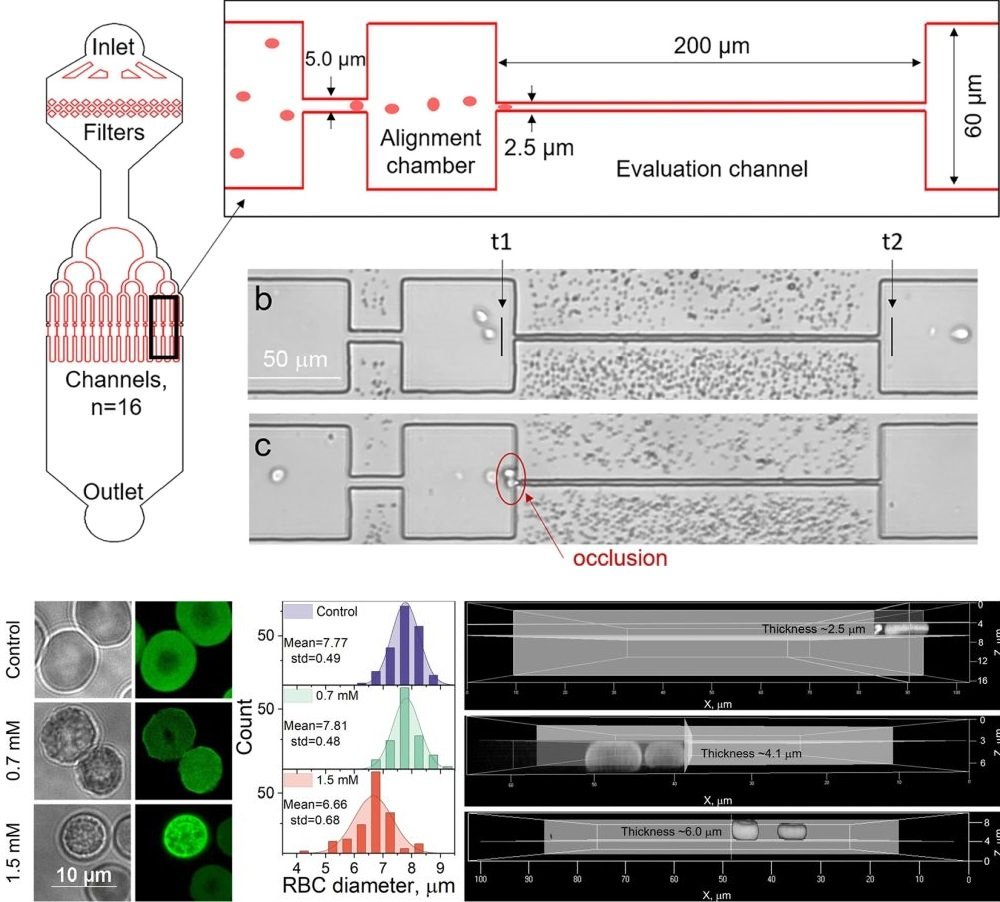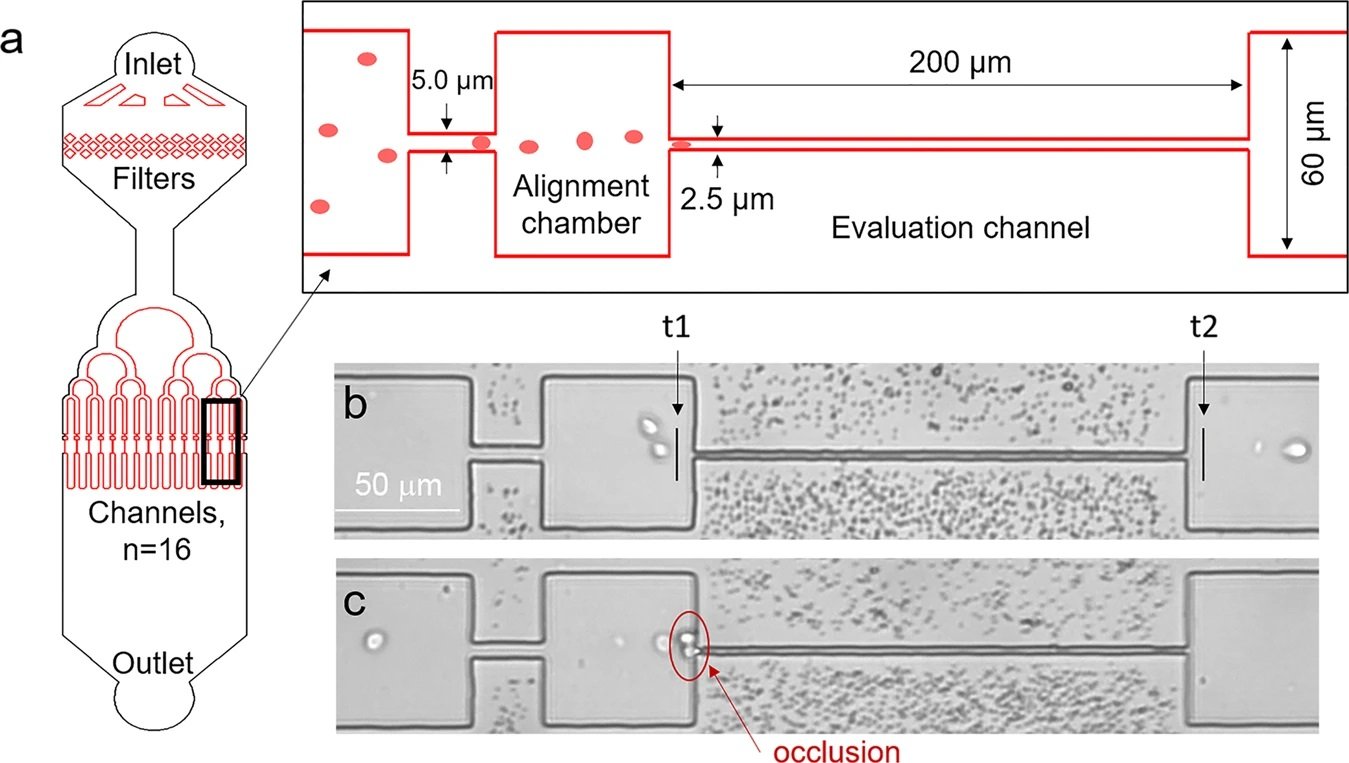
14 Jul Microfluidics can help to determine the antioxidant capacity of RBCs to reduce the risk of anaemia during chemotherapy
Abstract
“Oxidative stress is one of the key factors that leads to red blood cells (RBCs) aging, and impairs their biomechanics and oxygen delivery. It occurs during numerous pathological processes and causes anaemia, one of the most frequent side effects of cancer chemotherapy. Here, we used microfluidics to simulate the microcirculation of RBCs under oxidative stress induced by tert-Butyl hydroperoxide. Oxidative stress was expected to make RBCs more rigid, which would lead to decrease their transit velocity in microfluidic channels. However, single-cell tracking combined with cytological and AFM studies reveals cell heterogeneity, which increases with the level of oxidative stress. The data indicates that the built-in antioxidant defence system has a limit exceeding which haemoglobin oxidation, membrane, and cytoskeleton transformation occurs. It leads to cell swelling, increased stiffness and adhesion, resulting in a decrease in the transit velocity in microcapillaries. However, even at high levels of oxidative stress, there are persistent cells in the population with an undisturbed biophysical phenotype that retain the ability to move in microcapillaries. Developed microfluidic analysis can be used to determine RBCs’ antioxidant capacity for the minimization of anaemia during cancer chemotherapy.”

“a Schematic view of the device; b an image of a single microchannel with control RBCs; c 1.5 mM tBuOOH treatment can lead to microchannel’s occlusion. t1 and t2 marks indicate the capturing points for determining cells’ transit time in microchannels.” Reproduced under Creative Commons Attribution 4.0 International License from Besedina, N.A., Skverchinskaya, E.A., Shmakov, S.V. et al. Persistent red blood cells retain their ability to move in microcapillaries under high levels of oxidative stress. Commun Biol 5, 659 (2022).
Figures and the abstract are reproduced from Besedina, N.A., Skverchinskaya, E.A., Shmakov, S.V. et al. Persistent red blood cells retain their ability to move in microcapillaries under high levels of oxidative stress. Commun Biol 5, 659 (2022). https://doi.org/10.1038/s42003-022-03620-5
Read the original article: Microfluidic device for investigation of RBCs transport in microcapillaries


